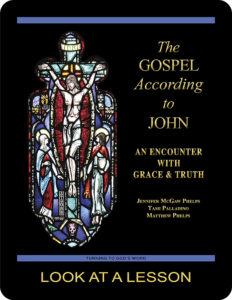‘eat my flesh’
 The sixth chapter in the Gospel According to John (NABRE) contains what sometimes is called the Bread of Life discourse. For centuries people have been debating what Jesus meant when he said to his followers: “Unless you eat my flesh ….” This passage contains an interesting tension on the topic when Jesus takes a significant shift from eating the bread of life to eating his flesh.
The sixth chapter in the Gospel According to John (NABRE) contains what sometimes is called the Bread of Life discourse. For centuries people have been debating what Jesus meant when he said to his followers: “Unless you eat my flesh ….” This passage contains an interesting tension on the topic when Jesus takes a significant shift from eating the bread of life to eating his flesh.
The ancient Greek verb that means “I eat” is irregular because it uses different stems or roots in different tenses. In the present tense, the verb form ἐσθίω (esthio) is used. In the future tense, it’s ἔδομαι (edomai), and in the simple past tense and later also future tenses, the stem is borrowed from phagein. All of these different forms simply mean “I eat” or “I consume.”
Greek has another word that means “I eat” as well, τρώγω (trogo). In literature prior to the New Testament, trogo refers to the way animals—specifically herbivores—eat. When speaking of humans, it refers to eating vegetables or fruit. To express this difference, many sources translate trogo as “I gnaw,” an attempt to indicate that it’s distinct in meaning from esthio.
All six uses of trogo in the Greek New Testament appear in the form of the present participle τρώγων (trogon). Because the Evangelist John never uses the present stem esthio in any of his writings, many well-established sources suggest that in the Gospel According to John the word trogo serves in place of esthio as the present stem of the verb “to eat” and so simply means “I eat,” which is a grammatical possibility.
The pattern of use of trogo, however, suggests that something else is happening. Of its six uses in the New Testament, trogo appears four times in the Gospel According to John 6:54–58 (NABRE). At this point in the discourse, the Jews are struggling to understand how Jesus can give his flesh as bread to eat (phagein). Jesus reasserts that “unless you eat the flesh (phagein) of the Son of Man and drink his blood, you do not have life within you.”
Here, as Jesus is clarifying his previous point, his language shifts, and for the remainder of the discourse, trogo replaces phagein when Jesus is talking about eating his flesh. This shift accomplishes two things. First, the use of a present stem changes the aspect of the statement, which means that instead of talking about a one-time act, Jesus now is talking about an on-going process—”the one who keeps eating my flesh…”. Secondly, as we’ve seen, trogo refers to eating as herbivores do, and so the use of that stem suggests that although we’re to eat Jesus’ flesh, we’re to do so in a vegetarian manner.
The language here for eating reflects the tension involved in eating bread that is flesh. Everything about this usage is complicated, probably because Jesus was trying to express something the Greek language is not equipped to express elegantly—the miracle of the Eucharist. Our human minds as well are not equipped to elegantly express this concept.
related topics: bread of life; I AM; thanksgiving; transfiguration; transubstantiation
you also may like our study of the Gospel According to John
 The Gospel According to John: An Encounter with Grace & Truth, a 25-lesson Catholic Bible study with an imprimatur, examines the Fourth Gospel’s view of Jesus Christ as the Son of God, with special emphasis on the institution of the sacraments of the Church as the means by which Christians are purified and made holy. This recently revised study includes maps and additional commentary, and takes a closer look at the way in which Jesus relates to individual men and women. Click on the book’s cover to view a sample lesson.
The Gospel According to John: An Encounter with Grace & Truth, a 25-lesson Catholic Bible study with an imprimatur, examines the Fourth Gospel’s view of Jesus Christ as the Son of God, with special emphasis on the institution of the sacraments of the Church as the means by which Christians are purified and made holy. This recently revised study includes maps and additional commentary, and takes a closer look at the way in which Jesus relates to individual men and women. Click on the book’s cover to view a sample lesson.
 Click on the picture of the statue of Moses with horns (above) to learn more about Lost in Translation. A new entry is archived each Monday. Contact us to receive Lost in Translation by email every week. You may use any of the contact links on our website to ask Matthew a question.
Click on the picture of the statue of Moses with horns (above) to learn more about Lost in Translation. A new entry is archived each Monday. Contact us to receive Lost in Translation by email every week. You may use any of the contact links on our website to ask Matthew a question.
